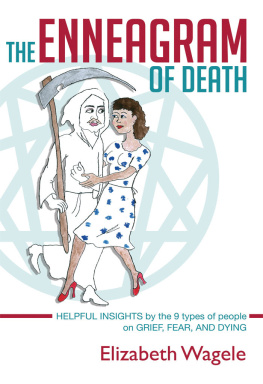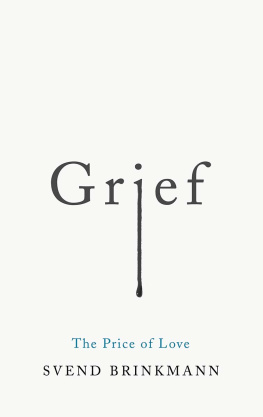Embracing Death:
A New Look at Grief,Gratitude and God
by
Terri Daniel
with DannyMandell
Embracing Death:
A New Look at Grief,Gratitude and God
by
Terri Daniel
with DannyMandell
Copyright 2009
Terri Daniel with Danny Mandell
Smashwords Edition
For more information please visit
www.afterlifeawareness.com
This ebook is licensed foryour personal enjoyment only. This ebook may not be re-sold orgiven away to other people. If you would like to share this bookwith another person, please purchase an additional copy for eachperson. If you're reading this book and did not purchase it, or itwas not purchased for your use only, then please return toSmashwords.com and purchase your own copy. Thank you for respectingthe hard work of this author.
To Danny and his HeavenlyHomeboys
Acknowlegments
Immense gratitude and love to those who haveassisted, inspired
and supported me in the creation of thisbook:
Anna Bonas, DC LAC OMD
Carolyn Weislogel
Chrystal Wadsworth
Cynthia Morrow-Hattal, Ph.D
Danika Campfield
David Staume
Diane Gobel, MSCC, CCHt
The Danny Dialogs
George Bonano, Ph.D
Joellyn St. Pierre, D. Div.
John Hunt and O Books
Judy Gibson
Ken Stoller, MD
Krista Goering
Lindsay Roberts
Lorilee Friedland
Lori Justice-Shocket
Marietta Roby
Marilyn Rose
Mukesh Chaturvedi
Odani Keiko
Rebecca Covington
Robin Clark
Sue and Boyd Coxen
Suzy Ward
George Bonano, Ph.D.
Niel Shocket, MD
Special thanks to Pamela Jo Hunter for coverdesign
Eternal Gratitude to my beloved guides andguardians
Is it true there is acure for all illness?
Only if you are wiseenough to see death as a cure.
Emmanuels Book
As an afterlife awareness educator andmother of a child who died at age 16 after a lengthy illness, I amfiercely committed to the idea of conscious dying and consciousgrieving. By understanding that death is neither an enemy nor anending, the process of grieving the death of a loved one becomes ajourney of awakening for the person who has died and for those whoremain on earth.
Ive spent a lifetime studying metaphysicsand spirituality, and I believe unequivocally that there are no"good" or "bad" experiences; only the soul's constant craving forgrowth and expansion. In this view, illness and death are notexperiences to be avoided, but to be embraced with gratitude forthe shifting of perceptions and gifts of growth they provide. In astate of gratitude at this level, we accept every experience withlove, because we recognize it as one of our souls creations. Evensomething as painful as the death of a child can be seen as part ofa flawless pattern of perfection that moves the family and theentire soul group forward in unexpected ways.
When my son Danny was diagnosed with alife-threatening illness at age 10, friends and family asked, Doesthis change your unconventional spiritual views? Does it make youwant to go back to traditional notions of God, afterlife andreligion?
This might have been a good question forsomeone whod taken only a few tentative steps outside thereligious box during her lifetime, but for me, the question waspreposterous. The stunning news that my son would only live a fewmore years actually confirmed what Id intuitively known since Iwas a teenager there are pre-birth agreements between souls.Reincarnation is real. Theres a reason for everything. And wecreate our own experiences on earth with the assistance ofnon-physical guides and helpers.
Metaphysical thinking was nothing new to me.In 1966 when I was 13 years old, I found a collection of booksabout world religions on my father's bookshelf, and read them all.He also had a copy of Carl Jung's Man and his Symbols, and Iremember reading it on the bus on the way to and from junior highschool. The following year, a Krishna Consciousness congregationmoved into an old church in my neighborhood and I attended theirSunday feasts and listened to lectures by their teacher, SwamiBhaktivedanta. When I was 16, my liberal, free-thinking high schoolEnglish teacher taught the first five books of the Bible asliterature, and from there, fueled by intense curiosity, I went onto read the rest of it (my family was not religious at all, and thehigh school class was my first exposure to this material). By thetime I was 19 Id read the Tibetan Book of the Dead, RuthMontgomery and Edgar Cayce. These teachings resonated with me asabsolute truth back then, and over the years, supported by furtherstudy and practice, these truths were confirmed again and again. Sowhen Danny was diagnosed, I knew instantly that his soul had a planof its own. And it was my intention to honor his intention.
Lets go back for a moment to thosetraditional notions of God, afterlife and religion. Had I perceivedthis situation through that lens, I might have been gripped withfear and helplessness, too puny and unworthy to comprehend themysterious workings of an all-powerful God who randomly dispensesgood or bad luck, sorrow or joy, wealth or poverty in life, andreward or punishment in death. By contrast, a more self-empoweredspirituality says that we are not at the mercy of a humanoid Godwho is separate from us, but are equal parts of a collective energythat IS God, an energy with which we work as co-creators. This workis done on earth as it is in Heaven, as our souls continuallyseek experience in and out of the body. The growth work we doduring our earthly incarnations carries over to the Other Side,where we evaluate and create new and effective situations to bringforth the ideal experiences to fuel our continued exploration. Inthis way there can be no tragedies, no here and there, no them andus, and no death.
Over the years, my passion for examiningdeath from the perspective of both the dying and the grieving ledme to an interesting mix of studies and practices drawn from allthe usual sources and many of the not-so-usual ones. One of thosesources is The Anamcara Project, a unique spiritual educationprogram created by Richard and Mary Groves. Their Sacred Art ofLiving and Dying seminars have attracted more than 10,000 studentsfrom a wide range of healing professions and the general public,including educators, clergy, hospice workers, physicians andmetaphysicians. I was drawn to the program when I first heard theterm, spiritual midwife, referring to someone who helps the dyingmake their transitions from this world to the next. Because theword midwife so perfectly described the role I played in Dannysdeath, I sought out the Anamcara Project, and it became animportant part of not only my work as a hospice volunteer, but mypersonal growth path as well.
One of the things I learned in the Anamcaratraining is that in the early hospices it was understood that deathis not the opposite of life, but the opposite of birth, or in asense, the same as birth. In many of these hospices it was commonto see women giving birth on one side of the room while people weredying on the other side, all guided by midwives, while minstrelsstrolled around playing soothing music. Death may not be theopposite of life, but it is certainly a part of life, and there aremany social and religious traditions that recognize and honor deathas the sacred, intimate journey that it is.
But sadly, modern America has created aculture of denial around death, and hospice care is still notgenerally understood or accepted. In ancient times the word"hospice" literally meant hospitality, a process of assistingtravelers with their journeys, including the journeys of birth anddeath. In those times we lived closer to the land; we saw peopleand animals die all the time, and there was very little about itthat was terrible or frightening. The terror came with religiousdoctrine and the concept of evil and punishment, which embedded thefear of death into our thinking.
Next page











